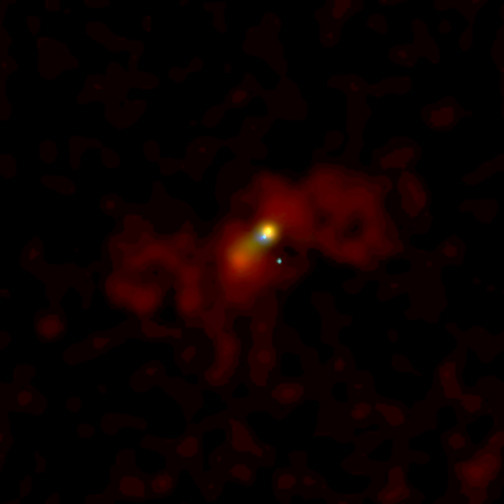
 Credit: NASA/SAO/CXC/J.McDowell
Credit: NASA/SAO/CXC/J.McDowell
Not Just Passing Through
Galaxies are largely empty space. When two galaxies collide, there's little
chance that individual stars in each galaxy will crash into each other.
That doesn't mean that galaxy-galaxy collisions are not accompanied with
their own fireworks, however. The image above shows an X-ray image,
obtained by the Chandra X-ray
observatory, of a pair of colliding galaxies known as Arp 220. This
image shows a bright central region at the waist of a glowing
hour-glass-shaped cloud of multimillion degree gas that is rushing out of
the galaxy at hundreds of thousands of miles per hour. Astronomers believe
this emission is produced by a "superwind" generated by hundreds of
millions of newly-formed stars, perhaps triggered by the collision. Farther
out, Chandra sees giant giant lobes of hot gas, possibly thrown out by the
impact of the collision, and which possibly may escape the galaxies
entirely. Chandra also detects 2 bright pin-points of X-ray emission,
possibly arising near supermassive black holes in the galactic nuclei. If
so, the two black holes may eventually merge, producing their own fireworks
(including gravitational
fireworks) - but this won't happen for hundreds of millions of years.
Last Week *
HEA Dictionary * Archive
* Search HEAPOW
* Education
Each week the HEASARC
brings you new, exciting and beautiful images from X-ray and Gamma ray
astronomy. Check back each week and be sure to check out the HEAPOW archive!
Page Author: Dr. Michael F.
Corcoran
Last modified May 6, 2002


